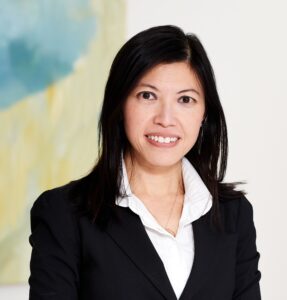Pharmaceutical portfolio planning involves crucial decision-making about which drug development projects to pursue and how to allocate resources effectively. It is an essential aspect of pharmaceutical strategy and involves a complex balance of scientific potential, market opportunity, risk and financial considerations.
The major steps often involved in strategic pharmaceutical portfolio planning include:
Portfolio Analysis: This involves evaluating the current portfolio of drugs, which may include drugs in various stages of development, from preclinical research to late-stage clinical trials. Key aspects to consider include the therapeutic potential of each drug, the competition, the size of the potential market and the timeline for development.
Opportunity Identification: This step involves identifying new opportunities for drug development. This could be based on new scientific research, unmet medical needs or changes in the regulatory or market environment.
Risk Assessment: Drug development is a risky and costly process. It’s important to assess the risk associated with each potential drug, including the risk of failure in clinical trials, the risk of regulatory rejection and the risk of commercial failure even if the drug is approved.
Resource Allocation: A company needs to decide how to allocate its resources. This includes financial resources but also other resources like personnel and manufacturing capacity.
Prioritization and Strategic Decisions: The final step is making strategic decisions about which drugs to develop, which to deprioritize and which to potentially out-license or sell to other companies. These decisions should be based on a combination of scientific, market and financial considerations.
Portfolio planning is a dynamic process that needs to be revisited regularly as new information becomes available and as the external environment changes. Processes can vary between different companies and can also evolve over time as new strategies and methodologies are developed.
Xtalks spoke with Dr. Wendy Cheung, Global Head of Oncology Strategy, New Product Planning and Operations Specialty Care at Sanofi Genzyme, to learn more about the current climate of portfolio planning.
Dr. Cheung also serves as the Chairperson of Xtalks’ Strategy & Portfolio Planning Peer Circle.

Global Head of Oncology Strategy
New Product Planning and Operations Specialty Care
Sanofi Genzyme
Could you give us an overview of developing a new pharmaceutical portfolio?
Dr. Cheung: When we’re thinking about a new pharmaceutical portfolio, we must think about what the unmet needs are in the area we’re trying to pursue. Where do these unmet needs fit relative to the patient journey, from the time the patient gets a diagnosis, all the way to the fulfillment of the treatment.
It’s about understanding where that unmet need is today and thinking about if we were to develop a new modality or a new drug, what would that look like in the future? – Dr. Cheung
It’s about understanding where that unmet need is today and thinking about if we were to develop a new modality or a new drug, what would that look like in the future?
It’s about understanding where that unmet need is today and thinking about if we were to develop a new modality or a new drug, what would that look like in the future? – Dr. Cheung
The second piece is where the current bar of entry is. How competitive is it to develop a new therapy focusing on target and identify a new modality relative to the target? What is the relative competition to the disease areas that were chosen?
The way of thinking this through is through three questions:
1) What are the opportunities (and unmet needs) and what is the treatment landscape like today and tomorrow?
2) What are the opportunities that a company wants to embark upon relative to their priorities, expertise and current portfolios?
3) How will you achieve it?
Once you identify areas that you want to pursue, it’s important to assess whether that matches a company’s vision, current portfolio and scientific expertise. Most importantly, the question becomes where do we think the company can win? And when I think about winning, it’s not only from a commercial sense but also for patients.
And finally, how do you believe you’ll be able to compete? What does that look like from organizational capabilities and from investments? You have to determine how you want to invest as an organization to allow you to be able to compete and serve patients accordingly.
What are some of the key considerations and challenges in portfolio planning and management?
Dr. Cheung: I think the hardest piece is the prioritization of each opportunity, from developing and identifying the right candidate to having the investments to go through each phase of clinical trials.
When we first build out the portfolio, we build it by asset or by molecule. One can argue, well this one is special because of A, B and C, and this one is also special because of D, E and F. But if we don’t have a similar framework to really assess each of these opportunities relative to a disease area and a company’s priorities, it makes it difficult to compare and contrast where the investments need to be.
What do drug development and commercialization look like in today’s climate after things like the biotech boom and post COVID-19?
Dr. Cheung: I think the overall goal is to bring innovative medicines to practice because there’s still quite a bit of unmet need in terms of optimizing survival and clinical outcomes.
The challenge is that there’s higher scrutiny for companies to invest in new innovations in this financial climate, how we wait for data and how we look at each level of investment as time progresses. The patience into investing in the pharmaceutical industry is probably lower compared to what we’ve seen.
As an industry, I think we need to collaborate together, and be consistent in terms of communicating our benefits and showcasing what science can do. Also, we need to create a common understanding of how we understand the level of risk and the timing. In this way, we can help investors and stakeholders understand where the de-risking may be and what that level of risk can bring us from a reward standpoint.
And finally, we should consider how we want to classify the opportunities. I think one of the big pieces for new product planning is scenario planning. Scenarios are anchored on the assumptions that we make. The clarity in communicating those scenarios and allowing people to see the gamut in terms of where the opportunities and risks may lie would be critical.
What are the keys to a successful product launch?
Dr. Cheung: The trajectory of an initial product launch can determine the overall success of the product. i.e. the ‘successful-ness’ of a product will really depend on the first year of launch.
We’ve seen that the ‘successful-ness’ of a product will really depend on the first year of launch. – Dr. Cheung
Then the question becomes, how early do you want to invest in terms of launch readiness such that the product has the best first year of launch? Most people would say that two years before launch, while that is true, what’s more important, is to take the early commercialization concepts and what you need to win, and start to embed that into your development process and regulatory strategies, and in many cases now, also into diagnostics in terms of looking at AI.
Oftentimes people will think about the forecast and about what the revenue projection would be, but most people don’t think about as a company, where you need to invest and how you want to shape that market. Much of that market shaping needs to happen not only two years before but way earlier.
The second piece is thinking about stakeholder engagement. If the clinicians or investigators have not truly been participating along the development continuum, you would not get the same buy-in and championship. You really want to have that thought leader partnership along the way in development. That goes hand in hand in terms of who we select for clinical trial sites and who we need to engage in the thought leadership as you’re preparing the market, the product and also the company.
Can you tell us about your journey as a leader in new product planning and portfolio planning? What considerations and advice do you have for people looking to get into this area of work?
Dr. Cheung: I’m very humbled and grateful for the journey I’ve taken so far. As a clinical pharmacist, I started in medical information and medical affairs. I had the opportunity to move across different functions from medical to commercial, both leading sales teams, marketing teams and medical affairs teams locally. I also had opportunities to manage teams globally across different therapeutic areas and product launches.
People have given me opportunities and part of my mission is how do I inspire others and how do I provide opportunities and identify paths that have not been walked on? As a woman and minority leader, I feel like it’s part of my mission.
A leader, when looking at strategic planning, needs to understand what the nuts and bolts in the healthcare system are, including the decision-makings by our clinicians and what that will look like in the future.
People have given me opportunities and part of my mission is how do I inspire others and how do I provide opportunities and identify paths that have not been walked on? As a woman and minority leader, I feel like it’s part of my mission. – Dr. Cheung
People have given me opportunities and part of my mission is how do I inspire others and how do I provide opportunities and identify paths that have not been walked on? As a woman and minority leader, I feel like it’s part of my mission. – Dr. Cheung
Much of the detective work requires intellectual thinking and strategic capabilities to think through what the science currently is, what current treatments look like, what we can solve and how we’re going to do that. How do we help organizations and teams decide where the trade-offs are? Being able to thrive within ambiguity and being able to define scenarios and criteria is key.
It’s important to be connected with the clinical community and understand where the evolution is. Listen to all the different stakeholders, be it the investigators, clinicians across multidisciplinary care, caregivers across the continuum as well as patients and their families.
It’s a real privilege to see how we can change the way we practice medicine, but more importantly, how we can be impactful to patients in decades to come. That to me is the excitement, and I really welcome the next generation of leaders to come join me in this effort.
There’s a lot to do and there’s a lot more that we can learn.
In what direction do you see portfolio planning going in the future?
Dr. Cheung: The key question to me is, how do we accelerate translation in terms of development by leveraging new technology such as AI. The key is how can we learn faster.
What are some of the lessons learned so we can really expedite in terms of selecting the right drugs to develop?
In the area of oncology, only one in every ten molecules makes it from Phase I to product launch. The investment, as an industry, that goes in is tremendous. If we can imagine that we can improve the probability of success by 50 percent, that will go a long way in terms of how we can truly be impactful.
Please note the interview has been edited for brevity.
Since the time of publication of this interview, Wendy Cheung has moved to a new role as the Vice President, Pipeline Commercialization & Strategy – Oncology at AbbVie.
If you’re interested in joining Dr. Wendy Cheung in the Strategy & Portfolio Planning Peer Circle, you can sign up here or contact Gabriela Bravo at [email protected] to learn more.












Join or login to leave a comment
JOIN LOGIN